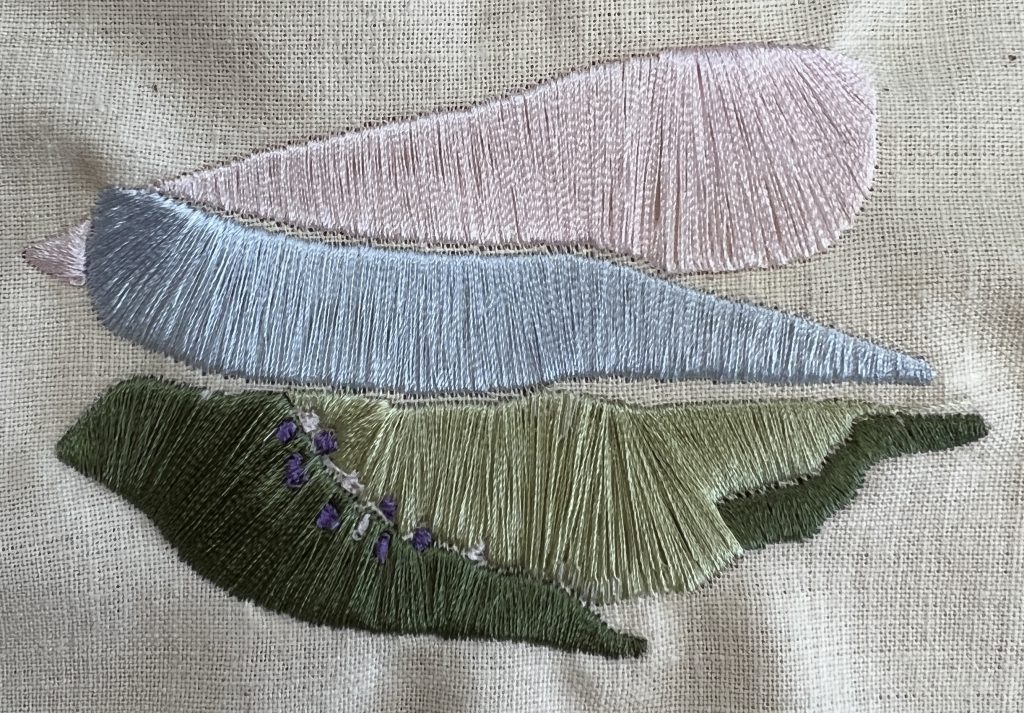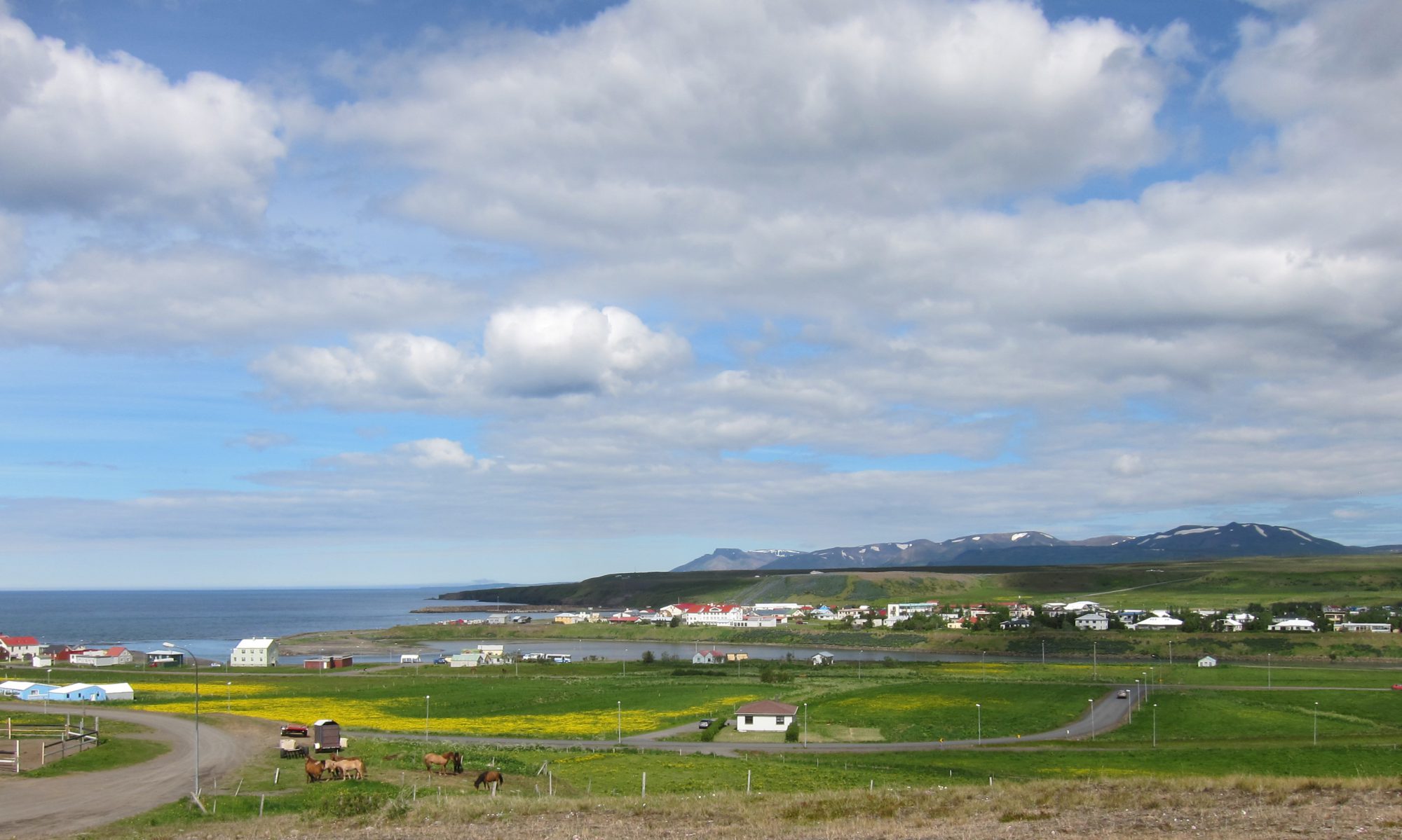When preparing for Iceland Field School, I knew that I needed to be open to any form of artmaking that may present itself. I had been working primarily with silk and acrylic paint for the past few months, and relocating to a new place without these materials easily accessible to me felt daunting and restrictive; I was intimidated by the idea of not having control over the direction and methods of research-creation within my practice. With some embroidery floss and a travel watercolour kit in hand, I ventured to the beautiful town of Blönduós, Iceland.
We’ve been learning several techniques to manipulate and unlock the potentials within fibre practices, such as tapestry weaving, wool spinning, and natural dyeing. I’m sure these will be elaborated on in future posts, but what felt like a turning point for me was the introduction to the TextileLab. Laser cutting, tufting, 3D printing, machine felting – all of these often-elusive processes were readily available to us thanks to the efforts of the Textílmiðstöð Íslands staff. But to me, the crown jewel was the digital embroidery machine.
I am always looking for connections between my painting and textile practices. This machine seemed like a perfect opportunity to not only learn a new skill, but to imagine these connections in new and exciting ways. With the help of TextileLab manager Margrét Katrín, I was soon learning all the steps and features of the machine – and all of its peculiarities! My idea was to upload a photo of a watercolour painting I had done while here in Blönduós, and have the machine embroider it so I have two versions of the same image. But after selecting my photo (below), I quickly realized I was missing some crucial steps!
When attempting to digitize my image into an embroidery pattern, the software was unable to isolate sections of the painting due to the colours being too light, and too similar in value. There was also a lot of background “noise” and texture from the watercolour paper, and it would have taken hours of editing and manual selection to make the file legible to begin stitching. So instead, I created a new, digital version of my painting in Procreate. I imported a photo of my original watercolour as a semi-transparent layer, and traced the key elements to create a newer, more solid version:
With this new version complete, I uploaded it to the embroidery machine and tried again. However, we soon discovered a new issue: my palette was still too light, and similar in value for the machine to clearly distinguish the sections. Margrét suggested I make another quick version, but choose extremely contrasting colours in the image. This was the result:
While this looks nothing like what I’d choose, and bears little resemblance to the original painting, it was a necessary step in order to allow the machine to create a pattern and embroider my design. And it worked like a charm! Before I knew it, the machine had started working away on the first green section.
But of course, there was one more thing I needed to keep in mind. As you can see from the latest digital version, the vibrant colours aren’t what I intended. Thankfully we managed to find an easy solution.
The trick was to know what each colour was supposed to be in the original, and to pick the correct colour thread when the machine prompted me to. For example, when the machine told me to load in the bright red colour in the centre of the piece, I instead threaded through a pale blue to match the original painting. I was lucky that the TextileLab had a fair selection of colours, and my usual pastel palette was almost entirely available to use!
After some careful colour picking, the process went quite quickly. Each section took less than 5 minutes, and the switching of the thread became almost reflexive, and meditative. After about 20 minutes of waiting and swapping colours, I was left with this beautiful finished piece!

Not bad for a first attempt! Margrét and I looked closely at the work to determine ways we could improve next time, such as tightening the original placement of the cloth to avoid puckering, and overlapping the colours slightly in the design software to avoid small gaps between sections.
Overall, I’m very pleased with this piece and I’m even more excited to make more! In my work, I often explore methods of working and re-working materials as ongoing investigations into their individual and collective potentials – that is to say, I like to experiment with new techniques, and push the limits of what we think a medium or material is meant to be. The TextileLab is an incredible resource for artists, both visiting and local, to have fun and see for themselves the potential locked within each piece of equipment, and within their own work. Needless to say, I’ll be back to do more work very soon!
Daniel Rumbolt (he/him)
Student, MFA Fibres and Material Practices
